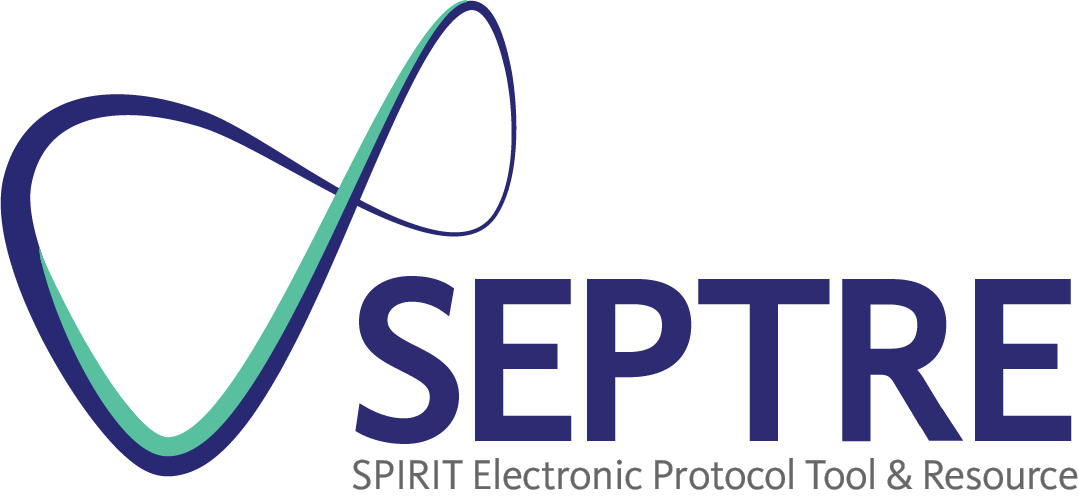Item 22: Plans for collecting, assessing, reporting, and managing solicited and spontaneously reported adverse events and other unintended effects of trial interventions or trial conduct.
Example
“Secondary outcomes
. . . In our study an adverse event will be defined as any untoward medical occurrence in a subject without regard to the possibility of a causal relationship. Adverse events will be collected after the subject has provided consent and enrolled in the study. If a subject experiences an adverse event after the informed consent document is signed (entry) but the subject has not started to receive study intervention, the event will be reported as not related to study drug. All adverse events occurring after entry into the study and until hospital discharge will be recorded. An adverse event that meets the criteria for a serious adverse event (SAE) between study enrollment and hospital discharge will be reported to the local IRB [Institutional Review Board] as an SAE. If haloperidol is discontinued as a result of an adverse event, study personnel will document the circumstances and data leading to discontinuation of treatment. A serious adverse event for this study is any untoward medical occurrence that is believed by the investigators to be causally related to study-drug and results in any of the following: Life-threatening condition (that is, immediate risk of death); severe or permanent disability, prolonged hospitalization, or a significant hazard as determined by the Data Safety Monitoring Board. Serious adverse events occurring after a subject is discontinued from the study will NOT be reported unless the investigators feels that the event may have been caused by the study drug or a protocol procedure. Investigators will determine relatedness of an event to study drug based on a temporal relationship to the study drug, as well as whether the event is unexpected or unexplained given the subject’s clinical course, previous medical conditions, and concomitant medications.
. . . The study will monitor for the following movement-related adverse effects daily through patient examination and chart review: dystonia, akathisia, pseudoparkinsonism, akinesia, and neuroleptic malignant syndrome. Study personnel will use the Simpson-Angus [Reference X] and Barnes Akathisia [Reference X] scales to monitor movement-related effects.
. . .
For secondary outcomes, binary measures, e.g. mortality and complications, logistic regression will be used to test the intervention effect, controlling for covariates when appropriate . . .”266
Explanation
Evaluation of harms has a key role in monitoring the condition of participants during a trial and in enabling appropriate management of adverse events. Documentation of trial-related adverse events also informs clinical practice and the conduct of ongoing and future studies. We use the term “harms” instead of “safety” to better reflect the negative effects of interventions.300 An adverse event refers to an untoward occurrence during the trial, which may or may not be causally related to the intervention or other aspects of trial participation.300;336 This definition includes unfavourable changes in symptoms, signs, laboratory values, or health conditions. In the context of clinical trials, it can be difficult to attribute causation for a given adverse event. An adverse effect is a type of adverse event that can be attributed to the intervention.
Harms can be specified as primary or secondary outcomes (Item 12) or can be assessed as part of routine monitoring. To the extent possible, distinctions should be made between adverse events that are anticipated versus unanticipated, and solicited versus unsolicited, because expectation can influence the number and perceived severity of recorded events. For example, providing statements in the informed consent process about the possibility of a particular adverse effect or using structured, as opposed to open-ended, questionnaires for data collection, can increase the reporting of specific events (‘priming’).269;337-339 The timeframe for recording adverse events can also affect the type of data obtained.340;341
The protocol should describe the procedures and frequency of harms data collection, the overall surveillance timeframe, any instruments to be used, and their validity and reliability, if known. Substantial discrepancies have been observed between protocol-specified plans for adverse event collection and reporting, and what is described in final publications.5 Although trials are often not powered to detect important differences in rates of uncommon adverse events, it is also important to describe plans for data analysis, including formal hypothesis testing or descriptive statistics.300;342
Finally, the protocol should address the reporting of harms to relevant groups (e.g., sponsor, research ethics committee/institutional review board, data monitoring committee, regulatory agency), which is an important process that is subject to local regulation.343 Key considerations include the severity of the adverse event, determination of potential causality, and whether it represents an unexpected or anticipated event. For multicentre studies, procedures and timing should be outlined for central collection, evaluation, and reporting of pooled harms data.
| 21b: Interim analysis | 23: Auditing |

